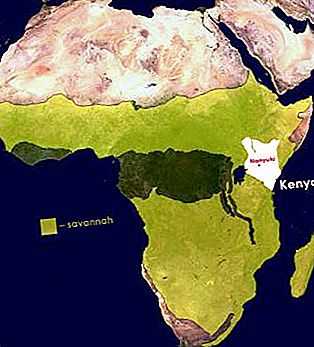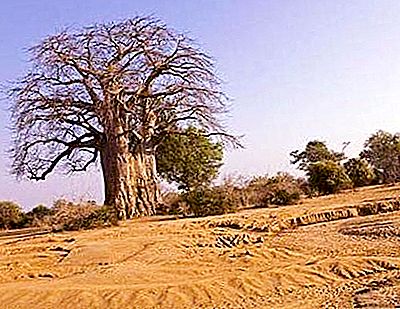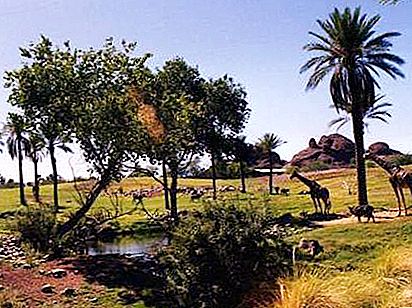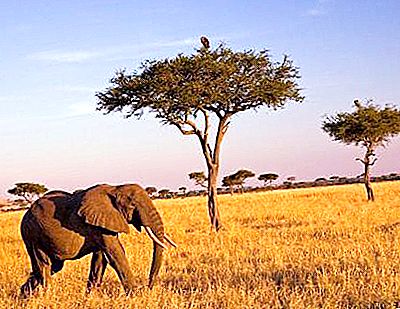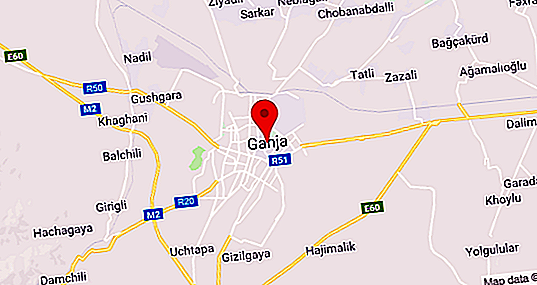Savannah is a natural zone with a predominance of grassy vegetation on red lateritic soils. This zonal natural complex (PC) is distributed between moist forests and semi-deserts. The vast expanses of the savannah occupy over 40% of Africa. Reddish soils are formed under tall grass with a predominance of cereals, rare specimens of trees and bushes.
Tropical forest steppe
Savannahs, except for Africa, are common in Australia and on the Hindustan Peninsula. Campos and Llanos on mainland South America belong to this type of PC. Savannah is often compared with the forest-steppe of the temperate zone of Eurasia. There are some similarities, but more differences. The main features that characterize the savannahs:
- low humus soils;
- Xeromorphous herbaceous vegetation;
- trees and shrubs with an umbrella-shaped crown;
- rich and diverse fauna (unlike the steppes, it is preserved).
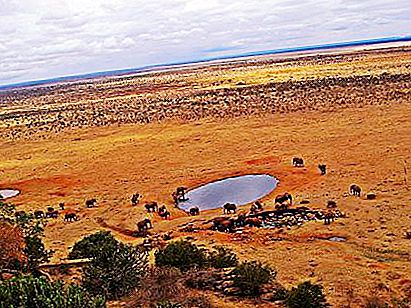
Campos - the savannah on the Brazilian Highlands - is formed by different types of plant communities. Serrados is characterized by the presence of stunted trees and shrubs. Limpos forms a tall grass steppe. Llanos on either side of the Orinoco River in South America is covered with dense grass and individual groups of trees (palm trees).
African savannahs. Soil and climate
The tropical forest-steppe zone occupies about 40% of the territory on a hot continent.
In the Northern Hemisphere, savannahs reach semi-deserts at a latitude of 16–18 °, and are closely approaching Lake Chad and the sands of the Sahara. The distribution boundary of this zonal PC in the south is the South Tropic. Savannahs occupy flat areas and rise to a considerable height within the East African plateau.
The prevailing types of climate are subequatorial and tropical. Two seasons are clearly distinguishable during the year - wet and dry. The rainy period is reduced when moving from the equator to the tropics from 7–9 to 3-4 months. In January, when the wet season begins in the Northern Hemisphere, the dry begins in the Southern. The total amount of moisture reaches 800–1200 mm / year. Humidification coefficient - less than 1 (not enough rainfall). Some areas suffer from poor moisture (K uv below 0.5–0.3).
What soil in the savannah is formed in such climatic conditions? In the rainy season, nutrients are intensively washed with water into the lower horizons. When the dry period begins, the opposite phenomenon is observed - soil solutions rise.
Type of vegetation and climate
Having received moisture, the tropical forest-steppe in Africa comes to life. The tan shades of dry stems are replaced by emerald green. The leaves grow on those trees and shrubs that dropped the foliage during the drought, the grass quickly stretches, sometimes reaching 3 m in height. The soil, flora and fauna of the savannahs of Africa are formed under the influence of climate. Temperature conditions and humidification depend on the geographical location of the site.
Closer to the border of the equatorial forests, the rainy season lasts about 9 months. A tall grass savannah forms here; groups of trees and shrubs are more numerous. There are mimosa and palm trees, forming gallery forests along river valleys. The most interesting representative of the flora of the savannah is baobab. The trunk of the tree often reaches 45 m in girth.
As you move away from the equator and approach the tropics, the rainy season is reduced, typical savannas develop. The territory bordering with semi-deserts receives moisture 3 months a year. The vegetation that forms in arid conditions is a desert type of savannah. At 50 ° C, it differs little from the desert. The North African peoples call these natural sites "sahel", the inhabitants of South Africa - "bush".
What soils prevail in the savannah
The soil of the tropical forest-steppe is reddish-brown in color, which is given to it by iron compounds. This type is characterized by a low humus content - from 1.5 to 3%. The middle part of the profile contains clay, and the illuvial-carbonate soil horizon is visible in the lower part. The above features are characteristic of East Africa, the northern part of the Australian continent and certain regions of South America.
What soil forms in the savannah depends on the type of moisture. With a sufficiently long dry period, humus accumulates due to the gradual decomposition of vegetation. More fertile soils in the dry savannahs of Africa and the steppes of South America. With regular wetting, a granular structure or carapace (hard crust) forms on the surface of the earth.
Soil types
Within the same natural zone a different amount of precipitation falls, dry periods differ in duration. Terrain features and climatic conditions leave an imprint on the type of savannah vegetation. Soils are formed by the interaction of all elements of the natural complex. For example, plant debris in the zone of moist forests does not have time to decompose, nutrients are washed out by heavy rainfall.
Compared to the red-yellow ferrallite soils of the forests of the equatorial belt, more humus accumulates in the savannahs. Due to the dry period, the slow decomposition of plant debris and the formation of humus occurs. An intermediate type is red ferrallite substrates of variable-humid forests. Laterite and red-brown soils are mainly located under the grass savannahs. Under the dry type of this natural zone, chernozems form. As they approach the desert regions, they are replaced by reddish-brown soils. The soil acquires a bright brownish or brick red color due to accumulations of iron ions.
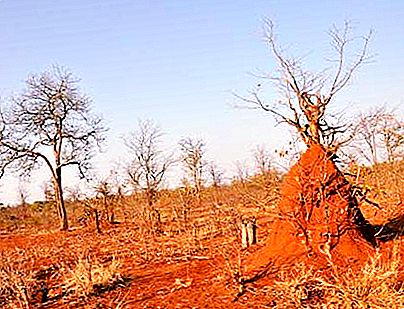
Wildlife Savannah
The fauna of the tropical forest-steppe is amazingly rich and diverse. There are representatives of all groups of the animal world. Spiders, scorpions, snakes, elephants, hippos, rhinos, wild boars find food in the savannah, take refuge from the heat of the day or rain. Everywhere there are earthen cones of termite constructions that revive the flat surface of the savannah. Spiders and small rodents inhabit the soil, rustles are constantly heard in the grass - snakes and other reptiles scurry about. Large predators - lions, tigers - deftly hide in the tall grass to attack the victim unexpectedly.
Ostriches behave cautiously: high growth and a long neck allow a massive bird to notice the danger in time and hide its head. Most inhabitants of the savannah flee from predators. Hoofed herbivores overcome considerable distances: zebras, gazelles, antelopes, and buffalos. Giraffes gracefully eat delicate foliage on the tallest trees, and on the lakeshore in the thickets of grass, clumsy hippos toss and turn.
Agriculture in the savannah and woodland zone
Significant areas of the tropical forest-steppe of Australia and South America are occupied by pastures and the cultivation of cotton, corn, peanuts. In agriculture in India and Africa savannahs and woodlands are also used. Soils of red-brown color are fertile when moistened and properly cultivated. Poor agricultural culture and lack of land improvement led to the development of erosion processes. The Sahelian zone in Africa is a territory of modern desertification caused by a combination of natural and man-made factors.


